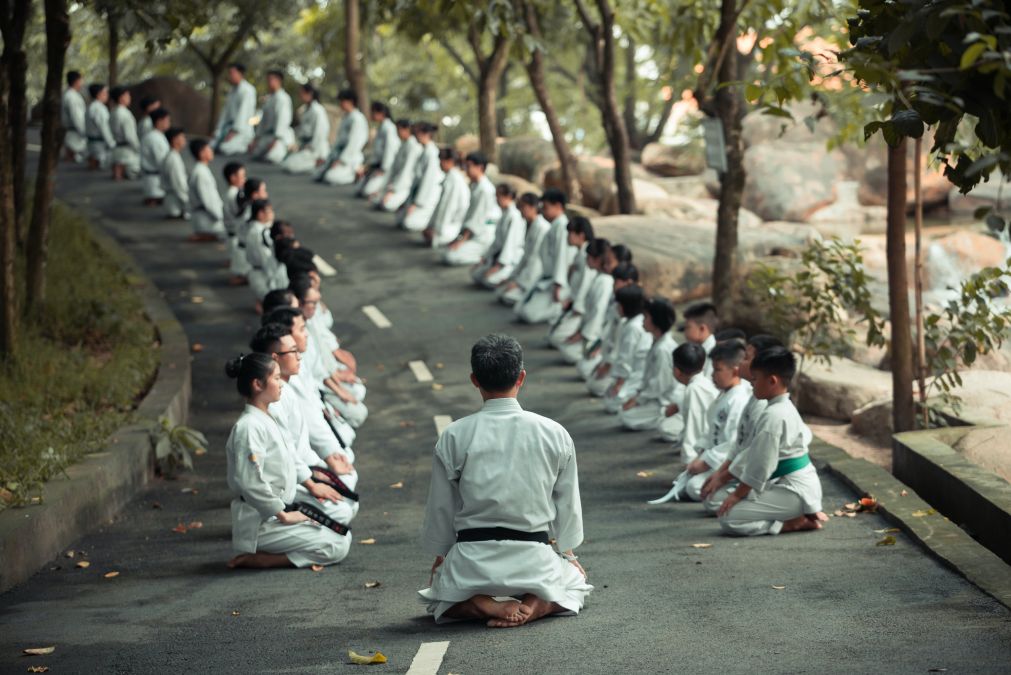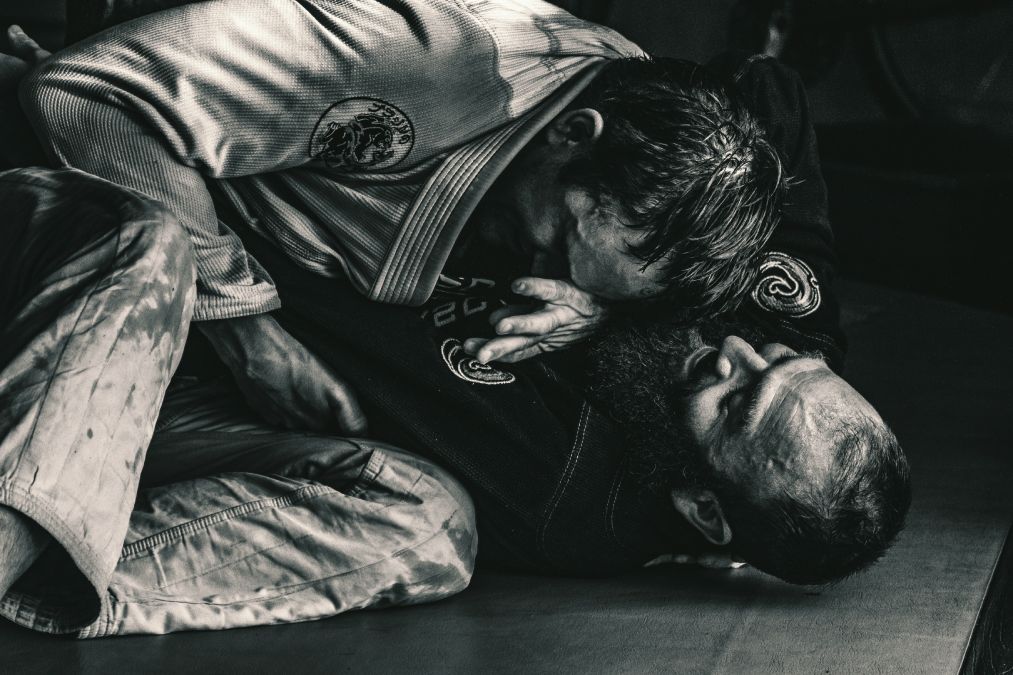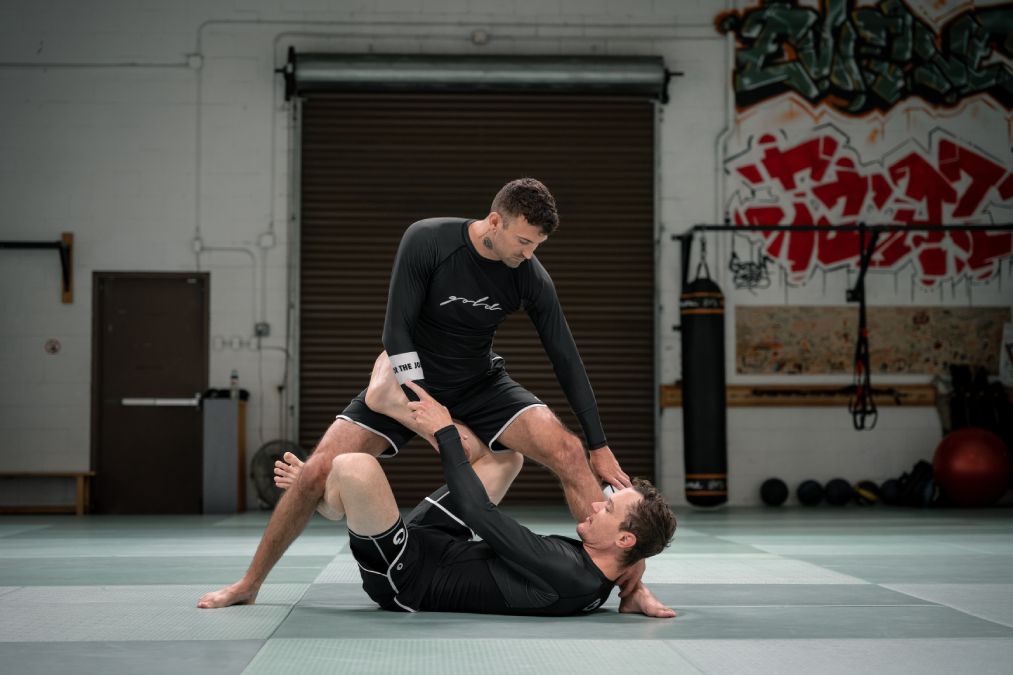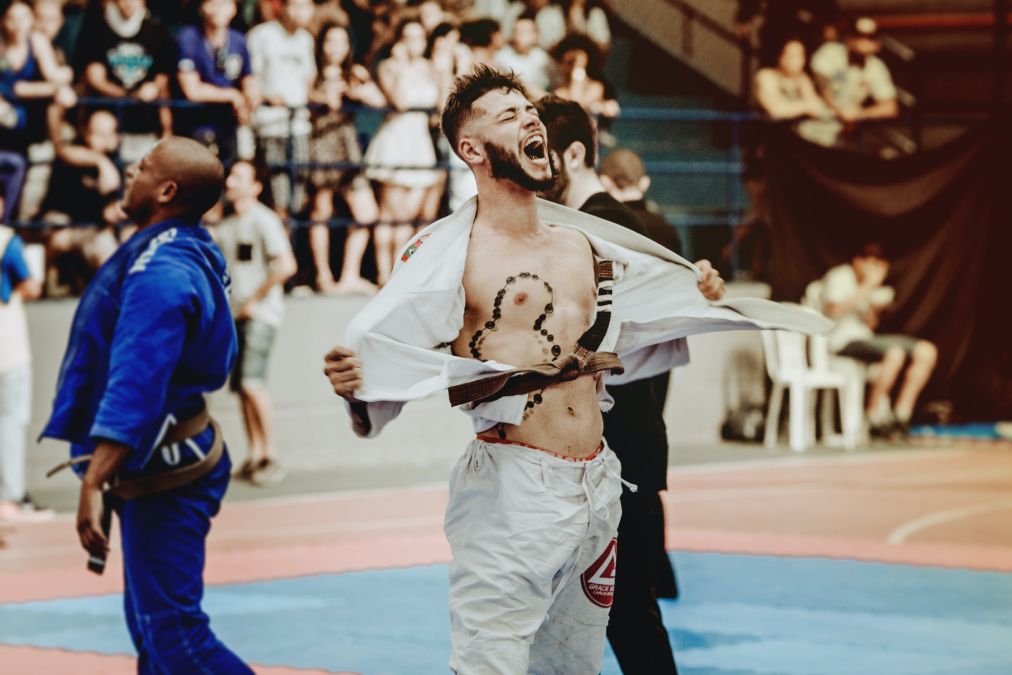Imagine walking down a dimly lit street, and you sense you’re not alone. Or picture yourself in a ring, facing an opponent, with the crowd roaring in anticipation. In both scenarios, knowing martial arts can be your secret weapon. But which martial art should you choose? Jiu Jitsu or Karate? Both are powerful, but they’re as different as night and day. Jiu Jitsu is like a chess game on the ground, where you use leverage and technique to submit your opponent. Karate, on the other hand, is a striking art that focuses on powerful kicks and punches.
So, which one is better? Well, it depends on what you’re looking for. Do you want to excel in self-defense or shine in Mixed Martial Arts (MMA) competitions? Each has strengths and weaknesses; the best choice depends on your goals. In this in-depth comparison, we’ll explore the unique aspects of Jiu Jitsu and Karate to help you make an informed decision.
History and Origins
Jiu Jitsu: The Brazilian Evolution of a Japanese Art
Contrary to popular belief, Jiu Jitsu didn’t originate in Brazil; it was born from the Japanese martial art of Judo. However, its Brazilian form took shape in the 1920s when Matsuo Maeda, a Judo expert, taught the art to Carlos Gracie. Carlos and his brother Helio Gracie adapted and refined these techniques to create what we now know as Brazilian Jiu Jitsu (BJJ). The Gracie family played a pivotal role in developing and popularising BJJ, emphasizing its effectiveness in ground combat and submission techniques.
Karate: A Fusion of Japanese and Chinese Martial Traditions
On the other hand, Karate has its roots firmly planted in Japan, although it was heavily influenced by martial arts from the “Ryu Kingdom” (now Okinawa) and China. In the early 20th century, Karate evolved as a striking martial art incorporating kicks, punches, and open-hand techniques. The art form was influenced by indigenous Okinawan fighting styles and Chinese martial arts, creating a unique blend that emphasizes offensive and defensive capabilities.
Strategies and Emphasis

Jiu Jitsu: The Art of Ground Control
If you’re interested in the tactical aspects of ground fighting, Jiu Jitsu is the martial art for you. The primary focus here is on grappling—controlling your opponent through various holds, locks, and submissions. Unlike striking-based martial arts, Jiu Jitsu doesn’t involve kicks or punches. Instead, it’s all about gaining a positional advantage on the ground, often using your opponent’s strength and momentum against them. The ultimate goal is to make your opponent submit through techniques like arm bars, chokes, and leg locks.
Karate: The Power of Strikes and Kicks
Karate, in contrast, is primarily a striking martial art. It emphasizes powerful kicks, punches, and open-hand techniques to disable opponents. However, Karate is not solely about striking; it also incorporates some essential elements of grappling, such as trips and throws. These techniques are generally used to set up strikes or to create distance between you and your opponent. Karate focuses more on stand-up fighting, and the objective is often to hinder your opponent with precise and powerful strikes.
Techniques: The Building Blocks of Jiu Jitsu and Karate
Jiu Jitsu: Mastering the Ground Game

In Jiu Jitsu, technique is everything. The art is built around various positions that give you control over your opponent. Some of the key positions include:
- Back Mount: Controlling your opponent from behind, often setting up for chokes.
- Full Mount: Sitting atop your opponent, giving you the leverage to apply various submissions.
- Side Control: Pinning your opponent’s torso while avoiding their legs.
- Guard: Using your legs to control an opponent between them, often while you are on your back.
Jiu Jitsu also features a range of joint locks and chokes designed to make your opponent submit:
- Joint Locks: Techniques like the armbar, kimura, and leg lock focus on applying pressure to specific joints, forcing your opponent to tap out.
- Chokes: Submissions such as the rear-naked choke, D’arce, Anaconda, and Triangle choke aim to restrict airflow or blood flow, compelling your opponent to submit.
Karate: The Art of Striking

Karate techniques are primarily focused on striking, but they offer a well-rounded skill set that includes:
- Punches and Kicks: From basic jabs to complex spinning kicks, Karate teaches a variety of strikes aimed at different body parts.
- Elbow and Knee Strikes: These close-range techniques can be devastating when executed correctly.
- Throws and Trips: While less emphasized than in Jiu Jitsu, Karate does include some basic throws and trips to disrupt an opponent’s balance and set up striking opportunities.
Styles and Forms: The Many Faces of Jiu Jitsu and Karate
Jiu Jitsu: Gi vs. No-Gi
In Jiu Jitsu, there are primarily two styles: Gi and No-Gi. The main difference between the two lies in the attire:
- Gi Jiu Jitsu: In this style, practitioners wear a traditional martial arts uniform known as a “Gi.” The Gi allows for various grips, which can be used to control or submit your opponent. Many traditional schools and competitions require the use of a Gi.

No-Gi Jiu Jitsu: Practitioners typically wear shorts and a rash guard in No-Gi. With the Gi, the game changes significantly; grips are easier to maintain, and the action is often faster-paced. No-Gi is popular in MMA and submission grappling competitions.

Karate: A Spectrum of Styles
Karate is not a monolithic martial art; it has various styles, each with its focus, techniques, and forms. Some of the most popular styles include:
- Shotokan: Known for its long, deep stances and focus on strong, linear movements.
- Kyokushin: Emphasizes full-contact sparring and is known for its rigorous physical conditioning.
- Goju Ryu: Incorporates hard and soft techniques, blending strikes with grappling and close-quarter combat elements.
- Wado Ryu: Focuses on body shifting and evasion, incorporating some principles from Jujutsu.
- Shito-Ryu: A blend of various styles, Shito-Ryu is known for its extensive catalogue of kata (forms) and quick, fluid movements.
Belt Ranking System and Physical Conditioning
Jiu Jitsu: A Journey of Skill and Endurance
In Jiu Jitsu, the belt system is relatively straightforward but challenging. The journey starts with a white belt and progresses through blue, purple, brown, and black belts. Beyond the black belt, three additional red belts are rarely attained and represent a lifetime of dedication to the art.
Jiu Jitsu demands a unique set of physical attributes. The art is upper-body dominant, requiring strong arms and shoulders for gripping and controlling opponents. The aerobic requirements are also high, as matches can last for extended periods, especially when both competitors are evenly matched.
Karate: A Spectrum of Skills and Power
Karate features a more diverse belt ranking system, starting with a white belt for beginners. As practitioners advance, they move through yellow, orange, green, blue, purple, red, and brown belts. Each belt represents a different skill level and mastery over various techniques and forms.
Karate emphasises lower-body strength and power, given its focus on kicks and stances. Practitioners often engage in exercises that build leg strength and explosive power. Aerobic conditioning is also crucial in Karate, as it helps maintain stamina during extended periods of high-intensity activity.
Which One is Right for You?
The “right” martial art for you largely depends on what you’re looking to achieve:
Self-Defense: If your primary goal is self-defense, both martial arts have their merits. Jiu Jitsu is excellent for close-quarters situations and ground defense, while Karate offers striking techniques that can incapacitate an attacker from a distance.
MMA Aspirations: A combination of both could be beneficial if you want to enter the Mixed Martial Arts world. However, Jiu Jitsu is often considered more versatile in MMA contexts due to its focus on ground fighting and submissions.
Physical and Mental Discipline: Both arts require a high level of discipline but in different ways. Jiu Jitsu often involves more direct, physical confrontation and problem-solving under pressure, while Karate focuses on form, precision, and control.
Choosing between Jiu Jitsu and Karate is not a one-size-fits-all decision. It depends on your personal preferences, goals, age, and physical condition. Both martial arts offer unique benefits and challenges; your choice should align with what you hope to achieve and find most engaging.
Conclusion
As we wrap up this comprehensive exploration of Jiu Jitsu and Karate, it’s clear that both martial arts offer unique pathways to physical prowess, mental discipline, and self-defense capabilities. From their distinct historical roots to the nuanced techniques and strategies they employ, each art form presents its own set of challenges and rewards. In the end, the best martial art for you is the one that aligns with your aspirations and keeps you coming back to the dojo for more. It’s not just about which art is “better,” but which suits you better.

